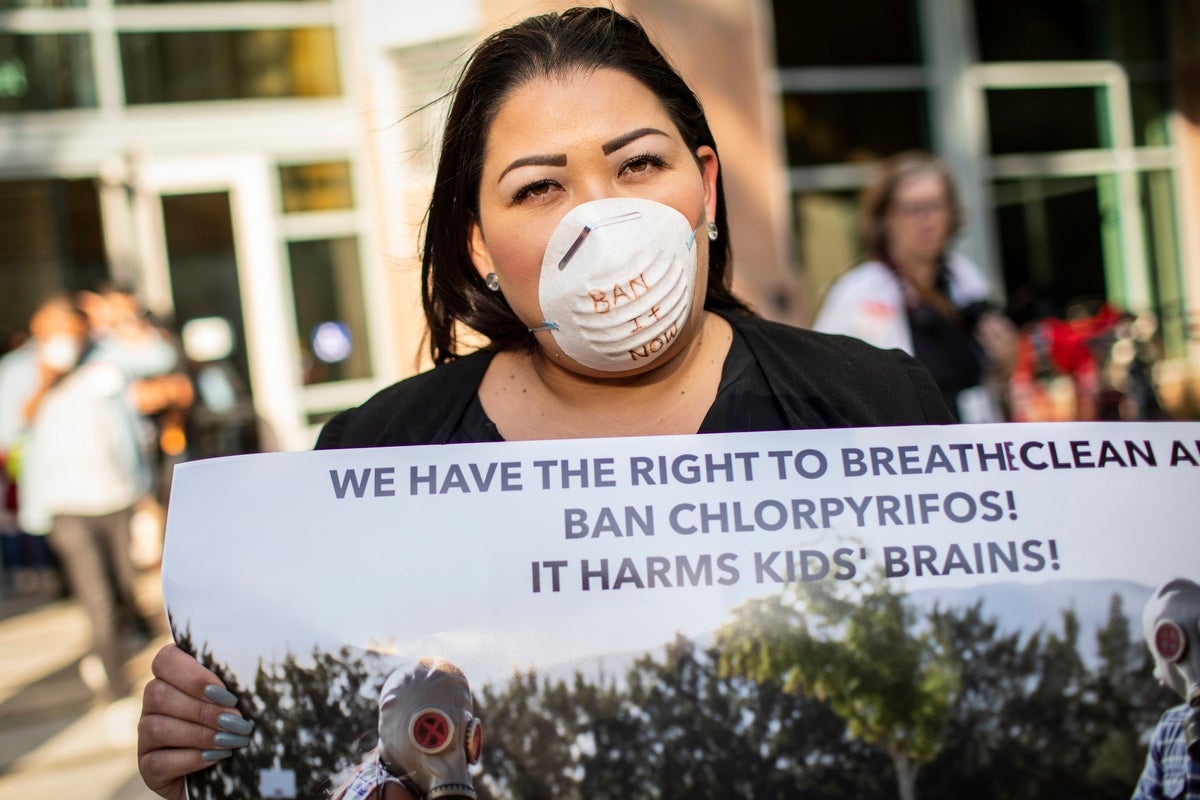Earthjustice goes to court for our planet.
We’re here because the earth needs a good lawyer.
The EPA Has Finally Banned the Toxic Pesticide Chlorpyrifos From Food
This page was published 4 years ago. Find the latest on Earthjustice’s work.
The U.S. Environmental Protection Agency just took a huge step toward protecting kids and farmworkers from a toxic pesticide linked to lifelong intellectual disabilities. On August 18, the agency announced that it will ban chlorpyrifos from all food crops. Earthjustice represented health, labor, and learning disability organizations in a successful legal battle to win this much-needed protection.
Why is the ban a major victory for public health?
- Developed by the Nazis for warfare, organophosphate pesticides like chlorpyrifos were repurposed for agriculture.
- Now chlorpyrifos is widely used and, as the EPA’s own scientific reviews have found, unsafe. Decades of studies have linked in-utero exposure to chlorpyrifos and other organophosphates to reduced IQ, attention disorders, and autism in kids.
- Chlorpyrifos enters our bodies through the water we drink, the air we breathe, and the food we eat, including fruits and vegetables from cilantro to oranges to raisins. Farmworkers who use the pesticide or simply enter fields where it has been sprayed are particularly at risk.
- “I didn’t understand just how terrible these toxic chemicals can be until my son, Isaac, was born with a mental disability,” activist and former farmworker Claudia Angulo wrote for Earthjustice in 2018. “I am sure that chlorpyrifos damaged my son’s brain for life.”
An Earthjustice lawsuit led to the ban on all food uses of chlorpyrifos.
- If the EPA cannot ensure that a pesticide won’t harm children, the 1996 Food Quality Protection Act requires the EPA to ban uses of the pesticide on food.
- On behalf of health, labor, and learning disability organizations, Earthjustice sued the EPA in 2019 for shirking this duty.
- In April 2021, the 9th Circuit Court of Appeals sided with Earthjustice and its clients, and ordered the Environmental Protection Agency (EPA) to either ban all food uses of chlorpyrifos, or figure out how to regulate it in a way that protects people, including those vulnerable populations.
- In its decision, the court wrote: “The EPA’s egregious delay exposed a generation of American children to unsafe levels of chlorpyrifos … But the EPA’s time is now up.”
Public support for a chlorpyrifos ban helped move the needle, even as chemical companies pushed hard to keep the pesticide on the market.
- As our case worked its way through the courts, more than 350,000 Earthjustice supporters sent messages to their political representatives asking them to ban the toxic chemical.
- This public pressure moved states like Hawai’i, California, Oregon, and New York to adopt their own chlorpyrifos bans in the last few years. In addition, the largest U.S. producer of chlorpyrifos stopped making the pesticide.
- The show of support for a ban was especially critical as pesticide manufacturers urged the EPA not to ban chlorpyrifos from all foods. Recent reporting by the Intercept documents how wealthy and powerful chemical companies have often been able to sway the EPA to approve hazardous products by using the tobacco playbook and pushing inaccurate studies. This time, that didn’t happen.
What comes next?
- Chlorpyrifos is one of many organophosphate pesticides that have been linked to neurodevelopmental disorders and even death. The EPA must protect people from the health harms of all these pesticides.
- The EPA is currently reviewing the safety of two dozen organophosphate pesticides and must complete its review by October 2022.
- To learn more about the health risks of organophosphates and what foods present the highest risk of exposure, read Earthjustice’s recent report.
What can I do?
Thank the EPA for doing its job by protecting people from chlorpyrifos’ poisonous effects.
